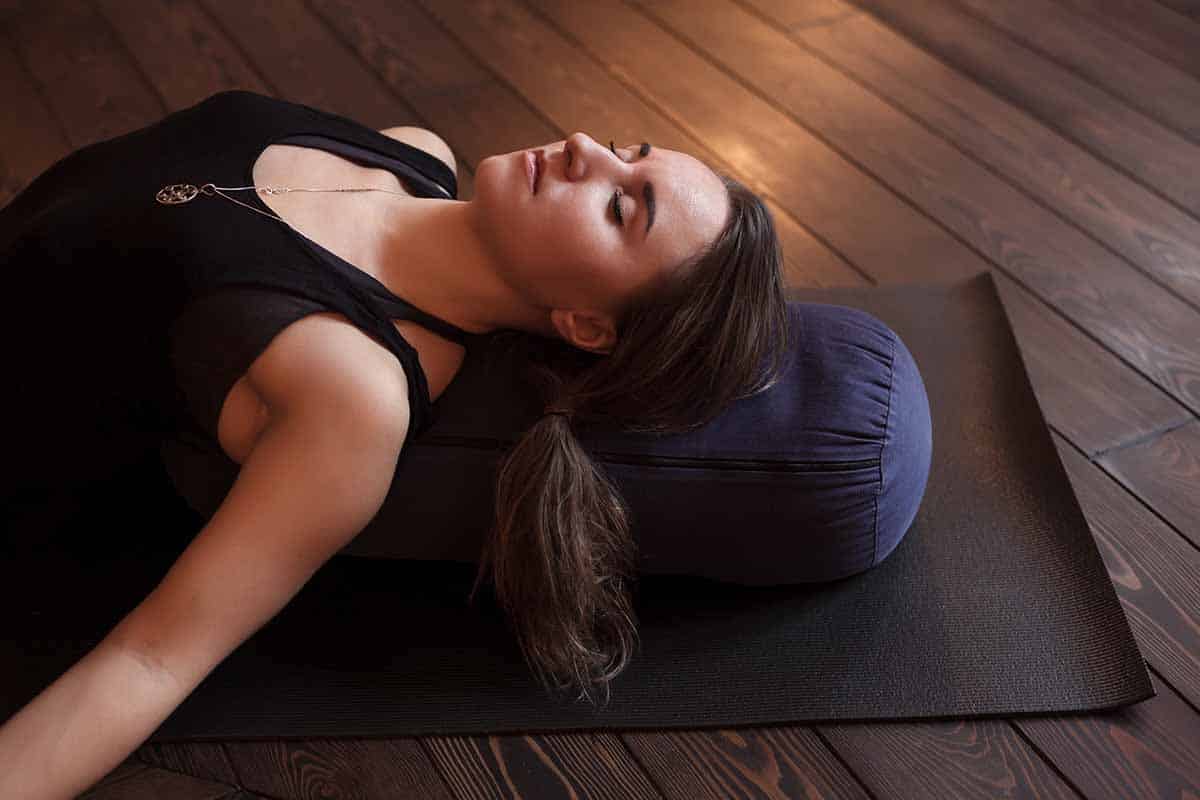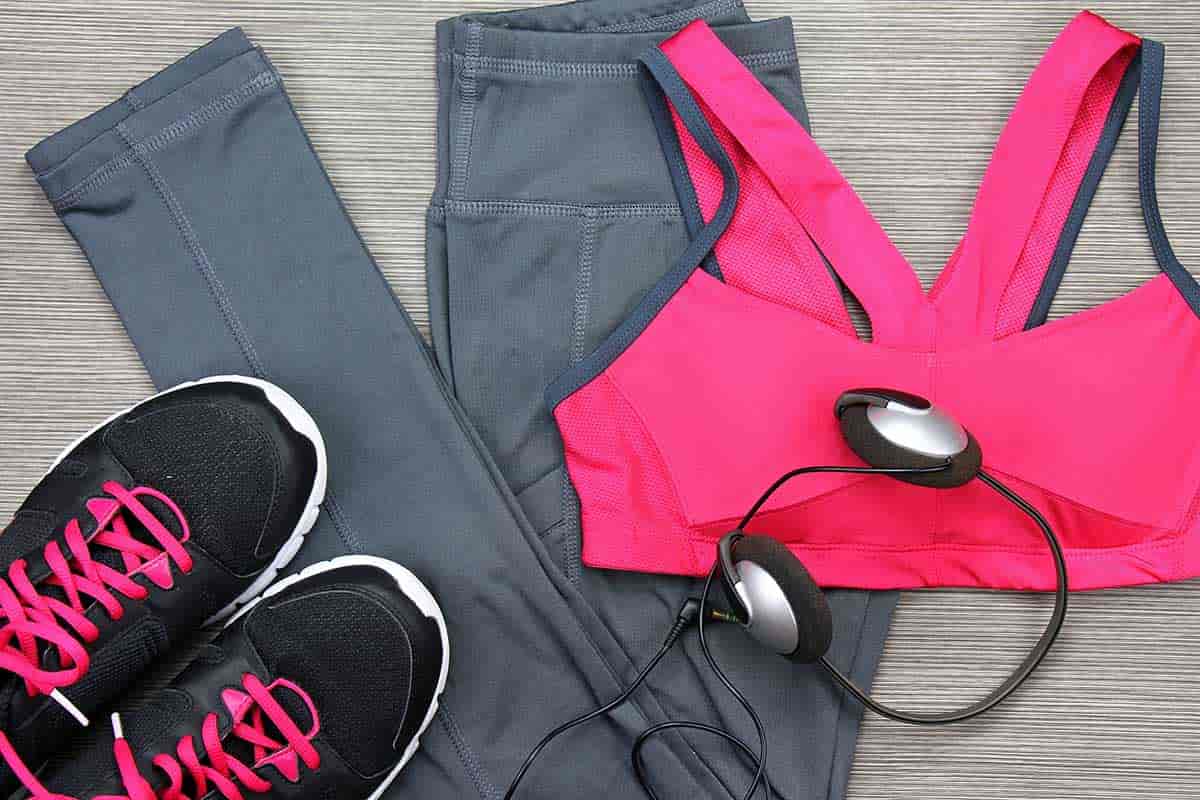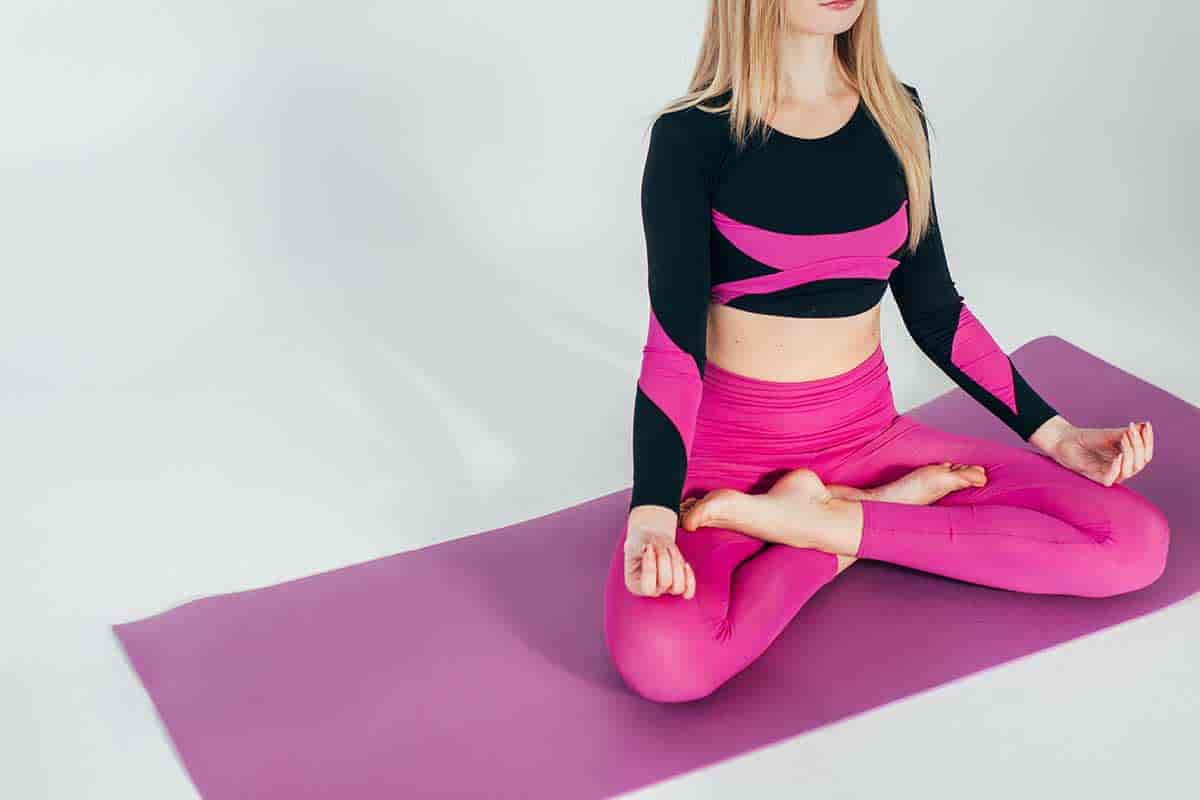
f you have ever taken a yoga class, you are aware that sometimes that mat just doesn’t cut it when it comes to supporting anything but your feet. Those who experience lower back pain or tight hips require a little extra support and comfort getting in and out of poses, this is where a yoga bolster is helpful.
Some popular uses for a yoga bolster are to provide extra support for the lower back, hips, and shoulders, to name a few. It can also create a cushion for knees, joints, and the neck. Relieving the pressure from these areas of the body can allow you to further your practice in a safe way.
This article will explain seven popular uses of a yoga bolster and the multiple ways this small yoga tool can not only reshape your asana practice but open you up in ways you thought were no longer possible.
Article Topics
What Is A Yoga Bolster Used For?
Before we get into what a yoga bolster is used for, let’s briefly explain what one is for those who may not have heard of or are new to the yoga world.
Differing from a yoga block, a yoga bolster is a firm pillow that can be found in various sizes, shapes, and designs. They come round, rectangular, and square-shaped and are typically filled with either foam or organic cotton.
The primary use of a yoga bolster is to add that little bit of extra support to joints and muscles that may be injured, tight, or haven’t been used in a while. They can be used while practicing adaptive yoga poses or any other pose you prefer. It can also gently allow participants to open up the chest while in certain poses and create extra length or height for stretching.
Yoga bolsters can also be used for the following,
- Meditation either sitting on top or resting head
- Support for pregnant bellies
- Adjust the body to further relaxation
- Assist in softening posture
- Opening the body to breathe deeper
Most yoga studios carry yoga bolsters for their participants, but they can also be easily purchased on sites like Amazon, a sporting goods store, or any yoga niche online website.
You can either use a bolster or a yoga block to help you achieve those relaxing poses or those advanced poses that involve balance.
What Types Of Yoga Classes Use A Yoga Bolster?
Anyone practicing yoga can add props to their routine to help with flexibility and strength. However, typically yoga classes that focus on restorative, Yin, prenatal, and Iyengar yoga use a yoga bolster during their flows.
7 Popular Uses Of A Yoga Bolster
Now that we know what a yoga bolster is and its primary functions, let’s dive a little deeper into the seven popular uses of a yoga bolster and how they can further strengthen your yoga practice.
Use 1
A widely popular use for a yoga bolster is during the resting phase or meditation portion of your class. Participants typically place the bolster under their knees to allow tension to reduce on lower back and knee joints.
This can also decrease any hip joint pain while lying on your back for a long period of time. A yoga bolster can also be helpful to support the head and neck during resting/meditation, as some may find the hard surface uncomfortable or painful.
A third use would be to sit on top of the bolster crossed-legged to elevate the hips allowing the knees to fall towards the ground while the spine is long. Using the bolster this way can help the legs from falling asleep while sitting for an extended period of time.
A variation of this last pose would be sitting on your knees with a bolster in between thighs to support the lower body and hips.
Use 2
A yoga bolster can be a great asset to forward fold stretches, especially if participants suffer from tight hamstrings, have difficulty bending over, or experience discomfort in their backs.
The yoga bolster can be placed on top of the thighs while you are in a seated position with legs straight out in front of you. Bringing the chest forward, you can rest your face and shoulders on top of the bolster as you use your breath to soften the muscles and extend your hands towards the ankles.
A variation to this pose would be to bring one heel into the inner thigh as the other remains extended, bringing the bolster just under the chest and resting the upper body for a deeper hamstring pose.
Use 3
Little to no flexibility within the hip joints and hip flexors is a common reason someone would require a yoga bolster for support. While practicing wide leg, seated, forward folds, participants may experience a tightness that prevents them from comfortably getting the full benefits of this pose.
Placing a bolster underneath their chest and belly may be the solution to relieving the tightening sensation of the inner thighs, clenching of the jaw, and tension within the forehead that most feel while attempting to bring the upper body close to the ground.
For someone who may need added height, place two bolsters on top of each other to get the upper body higher off the ground while still allowing for that inner thigh stretch.
Use 4
Backbends can be a tricky position for anyone to get in and out of, especially if there is very little flexibility in the back and core muscles. The yoga bolster can support the shoulders or lower back in this position, depending on which needs more help.
A supported backbend does not always mean a full wheel position, it can be as simple as laying on the ground with the bolster just under the shoulders and right above the lower back and extending your arms as far behind as you safely can.
You can also interlace fingers and place them behind the head, allowing the elbows to fall to the floor, opening up the heart center. Another way is to turn the bolster vertically so the entire back and shoulders are supported off the ground.
Use 5
When practicing twists, a yoga bolster can open the muscles of the upper chest, rib cage and allow deeper flexibility in the hips and lower back.
While laying on their backs, shoulders resting flat on the ground, participants can bring one knee over the opposite side of the body while keeping the other leg fully extended or bent.
The yoga bolster would be placed vertically under the leg that is twisting to support the knee, calf, and foot. This added support could create space between the hips and lower back and gently guide one’s breathing to relax muscles around the spine further to reap the full benefit of this pose.
If you are pregnant, a yoga bolster is an essential tool to have in your yoga bag. It allows for full support of the belly, hips, lower, back and keeps pressure off significant body parts that could harm yourself or the baby if movement is done incorrectly.
Use 6
Tight hamstrings can be a sore spot for most yoga goers when it comes to increasing flexibility. An excellent way to use a yoga bolster in this instance would be for an extended leg wall or waterfall pose.
Laying on your back, place the yoga bolster horizontally beneath you so that the hips and lower back lay on top of the bolster. Maneuver yourself until you are as close to the wall as possible and extend your legs fully.
Make sure the bolster fully supports your back and hips while your head and shoulders are on the ground, use the breath to flatten the feet and gently press the heels to the wall as the hamstrings begin to loosen.
Use 7
This next pose helps elongate the back while opening the sacrum and lower back muscles in a restorative and relaxing way. Using the yoga bolster in a child’s pose can help those participants who may have difficulty with tightness in the lower body and knee issues.
Place the bolster vertically beneath you so that your chest and belly would be rested on top of the pillow. Allow your toes to touch as you open your knees wide enough to lay your upper body between your thighs. Bringing your chest and belly to the pillow, lay your head to the side and allow the arms to come comfortably above your head or rest beside the bolster.
This pose is a gentle way to end any yoga flow and allow the heart, mind, and breathe to quiet and all the amazing energy you brought into your muscles to settle in peacefully.
What Should I Look For When Buying A Yoga Bolster?
When deciding on what yoga bolster can best fit your daily practice, it is important to decipher how you will be adding it to your practice. Discussing proper technique and your level of flexibility with an instructor is a great way to get more clarity on which bolster is best for you.
Purchasing all three types of bolsters is also an excellent way to have variety in your practice as you gain strength and increase flexibility. Each bolster can be used for different poses according to what you are working on during the class.
When buying a yoga bolster, you should look for the following criteria,
- Material: soft cover that is removable and washable
- Transport: strap or carrying case for easy travel
- Design: is cover interchangeable to change esthetic of bolster
- Color options
- Filling: is pillow washable cotton or made from memory foam
There are three shapes that a yoga bolster comes in, rectangular, cylinder, and lean. Here is a chart to help you identify what parts of the body each bolster shape best supports.
Other factors to take into consideration when buying a yoga bolster could be,
- Size: assist stretches and add height
- Shape: to support muscles and joints
- Weight: heavier bolster supports more weight, lighter is for comfort
- Filling: thicker bolster for opening and full-body support
Purchasing a bolster is a personal decision solely based on what you are trying to achieve in your practice. While they are very versatile and constructed to support many facets of yoga poses, it must also be functional for travel and care, and it doesn’t hurt if it looks pretty as well!
Final Thoughts
A yoga bolster has many functions to support an overall safe and healthy yoga practice experience. Always allow your body to guide you towards what feels good and what doesn’t, and when it needs that little bit of support, a bolster can provide.



